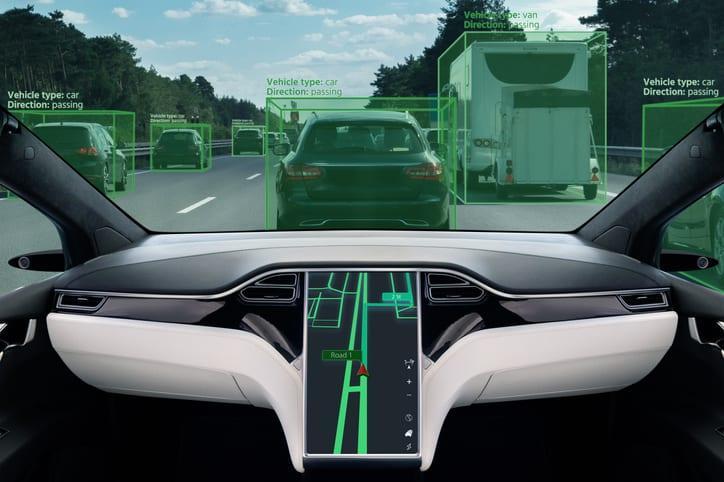

(844) - 444-4444

Many people are familiar with the term “negligence.” It is probably accurate to say, in a colloquial sense, that a driver who rear ends the preceding motorist at a red light is “negligent,” but to demonstrate that in a court of law all elements of a negligence claim must be established. These elements include duty, breach, injury, and causation.
For example, a New York driver has a duty to operate the car in a reasonable manner in view of all the circumstances. That is a duty. When we interact with society we are expected to do so in a reasonable and prudent manner so as to not endanger others. What can be seen as reasonable in one scenario may be very unreasonable in a different one. Driving the speed limit of 55 mph on a sunny, clear summer day is generally reasonable, but to drive at that speed in the middle of a blizzard is likely unreasonable.
A disregard of the duty of care—for example, driving 55 miles per hour in the middle of a blizzard, when it is unsafe to do so—is considered a breach of the duty of care. And when someone sustains injury because of such breach, causation is established, and the elements of the negligence claim are satisfied.
The person injured may generally seek compensation as a result of the negligence. That compensation, as the name implies, is designed to make up for the injuries caused by another.
One purpose of a negligence claim is to shift the cost of harm to the person responsible for causing it. If you are no longer able to enjoy your ordinary activities of daily living because of something someone did to you, the person who caused the harm should pay. Not only does this help you recover from your injuries and, in a sense, be “made whole,” but it also encourages people to act reasonably, lest pay for the harm caused. In New York, most injured motorists must show a “serious injury” to receive compensation for pain and suffering, which includes emotional anguish and loss of enjoyment of life.
Automobile liability insurance is required in New York and, in exchange for insurance premiums, most motorists who cause harm will be “indemnified” by an insurer that has the financial wherewithal to pay for damages caused by the insured. But that does not negate the personal responsibility of the insured: If you cause harm, by failing to pay attention behind the wheel or driving dangerously, you should pay for it. Tort law also serves a deterrence function, dissuading people from engaging in conduct that causes harm.
We live, however, in a time of increasing automation. Devices are “smart” and computer displays are working their ways into everyday appliances, from refrigerators to wearable technology. This “internet of things” is quickly permeating many aspects of our daily lives, including, for many, the daily commute home.
As we have covered in previous entries, the Society of Automotive Engineers (SAE) has classified five different levels of driving automation, ranging from the Level 1 (no automation) to Level 5 (full automation). At the time of this writing, roads are not populated with fully autonomous vehicles where the driver has fully ceded control of the vehicle to automated features.
Automakers have introduced driver assistance technology such as forward collision, lane departure, rear cross traffic, and blind spot warnings to help drivers more safely navigate the road. But these technologies are merely assistive, meaning that the driver can override features to gain full control of vehicle operation. The operator of a vehicle remains ultimately responsible if its operation results in an injury to another, and it is no real defense that driver assistance technology was not sufficiently assistive.
As time goes on and higher levels of driving automation becomes standard in new vehicles, however, drivers will likely become more and more reliant on technology, which is not always perfect and is sometimes even prone to error. That being said, human error such as inattention, distraction, or misjudgment is a major cause of car collisions. As the division of labor, so to speak, between driver and computer shifts as will the legal ramifications after a car crash.
For example, under Level 5 automation, the person behind the “driver’s seat” is not truly driving, and automated driving features do not require that person to “take over driving.” This fully autonomous driving setting applies “under all conditions” and is not contingent on the type of roadway or other environmental factors. This fully autonomous driving setting applies “everywhere in all conditions,” according to the classifications established by the SAE.
Returning to our previous hypothetical, is the person behind the wheel of a car with Level 5 driving automation still “negligent” if the car collides into another car from behind? If not, who is responsible? The automaker who manufactured the car? What about the company that manufactured the failing sensor?
Self-driving cars will have a profound impact on society. Novel questions of liability apportionment will likely arise when Level 4 and 5 vehicles start to populate our roads. The future of autonomous cars is not entirely clear.
The attorneys at William Mattar, P.C. will monitor the legal landscape as these emerging technologies evolve. At the time of this writing, however, Level 5 automation is not available to the driving public. New York motorists must uphold their duty to follow the rules of the road, and act reasonably under the circumstances. They cannot be negligent. If you were injured by a negligent driver, please do not hesitate to give us a call.





